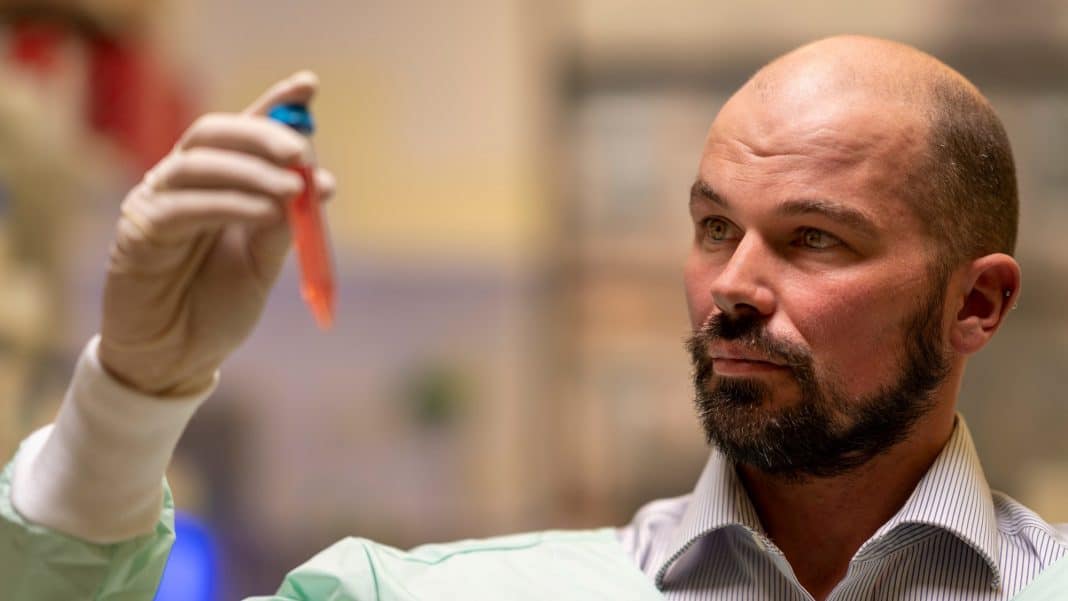A new type of hydrogel that could radically transform how we treat Parkinson’s disease has been developed by Australian National University (ANU) researchers in collaboration with The Florey Institute of Neuroscience and Mental Health.
In animal trials, the stem cell based hydrogel has demonstrated increased survival of grafted dopamine neurons in the brain, and restored movement in an animal model of Parkinson’s disease.
Shaking or applying energy to the hydrogel turns the substance into a liquid which allows it to be injected into the brain through a very small capillary using a needle.
Once inside the brain, the gel returns to its solid form and provides support for the stem cells to replace lost dopamine neurons, explained Professor David Nisbet, from the ANU John Curtin School of Medical Research.
Professor Nisbet said the hydrogel has the potential to also treat patients who have suffered a stroke, other neurological conditions, and could even be used to treat damaged knees or shoulders, following successful animal trials.
“When we introduced the gel technology with the stem cells, we saw huge improvement in the animals’ coordinated paw movement and overall motor function recovery,” he said.
Although dopamine-related drugs are a readily used treatment for people living with Parkinson’s disease, many have undesirable side effects that are exacerbated with time.
Professor Clare Parish, Head of the Stem Cell and Neural Development Laboratory at The Florey Institute, said the stem cell transplant delivered in this hydrogel avoids many of the side effects and could provide a one-off intervention that can sustain dopamine levels for decades.
The hydrogel technology is cost-effective and easy to manufacture on a mass scale, and it’s hoped the treatment could soon be made available in hospitals, but it must first undergo clinical trials.
“We must do our due diligence and ensure we check all the right boxes regarding safety, efficacy and regulatory approval before we can take this technology into the clinic, but we hope it can be available for use in the not-too-distant future,” Professor Parish said.
The ANU and Florey Institute Parkinson’s research has been published in the journal Advanced Functional Materials.
Get all the latest Canberra news, sport, entertainment, lifestyle, competitions and more delivered straight to your inbox with the Canberra Daily Daily Newsletter. Sign up here.
For more news:



